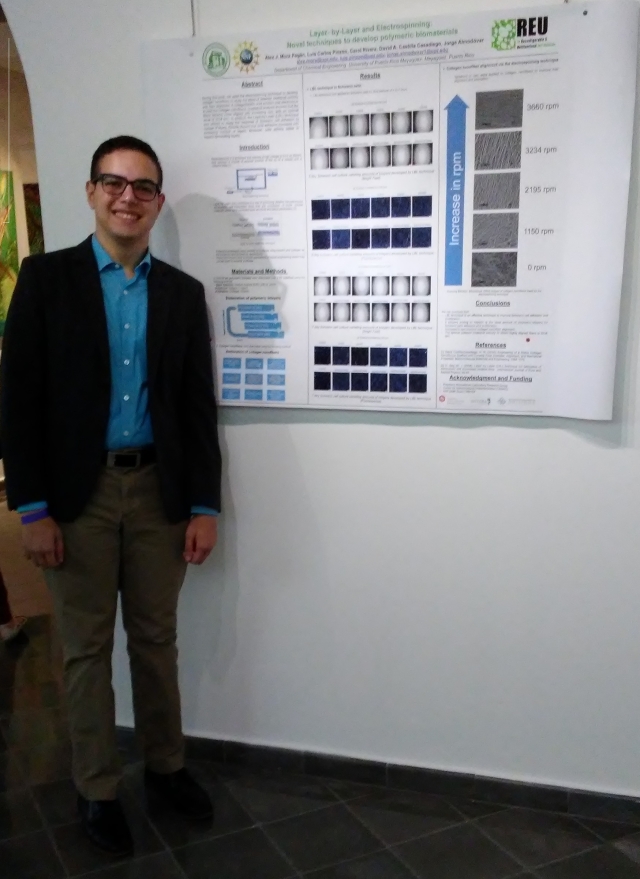Layer- by-Layer and Electrospinning: Novel techniques to develop polymeric biomaterials
Submitted by Alex Mora on
This summer has been amazing! Not only have I been able to explore a whole new research field but I have also grown passionate to its wide variety of topics. My project studied how increasing the collector rotational velocity increased collagen nanofiber alignment. In addition, I also worked with the Layer by Layer (LBL) technique to observe how proliferation and adhesion improved in Schwann cells when applied polymeric bilayers made with heparin and collagen. It is important that we observe a good alignment, proliferation and adhesion of both collagen nanofibers and Schwann cells respectively as we can fuse these two techniques to develop a scaffold. Scaffolds can be used to replace autografts. Some injuries in the peripheral nervous system utilize as gold standard treatment autografts in surgeries. These autografts require removal of nerves from healthy areas in the body to apply them into the injury. This requires multiple surgeries and generates loss of functions in the area were the nerve was removed. Our research is aimed at regenerating nervous tissue from the peripheral nervous system without the need of autografts.
The method that we used to develop collagen nanofibers is seen in Figure 1. For our studies of collagen nanofiber alignment, we applied different percent of collector rotational velocity from 0% to 100%. A collagen/acetic acid solution was used to make the collagen nanofibers.
On the other hand we used the method shown in Figure 2 to develop the polymeric bilayers. We applied collagen and heparin solutions for the LbL technique to serve as our polyanion and polycation, respectively. In addition, we used a sodium acetate buffer at pH=5 (AB) for our wash solution. Furthermore, we used 1 mg/mL of heparin in AB as our polyanion and 1 mg/mL of collagen in AB as our polycation.
Our results showed that polymeric bilayers are an efficient way of promoting Shwann cell proliferation and adhesion as we can observe when we compare Figure 3. Also, we observed that Schwann cells adhere better in heparin terminating layers (View Figure 4).
For collagen nanofibers we found that collagen nanofibers had a better alignment as we increased the collector rotational velocity as seen on Figure 5. Particularly, collagen nanofibers were more aligned when we applied a collector rotational velocity of 3234 rpm.
Overall, the experiences I have had through the REU have made me a better person and researcher. I have gained a new passion to the areas of research of Biomaterials and Bioengineering. This summer has been absolutely wonderful. I had the opportunity to make new friends and colleagues that I never expected to have made during this summer. This summer has been the best by far!















